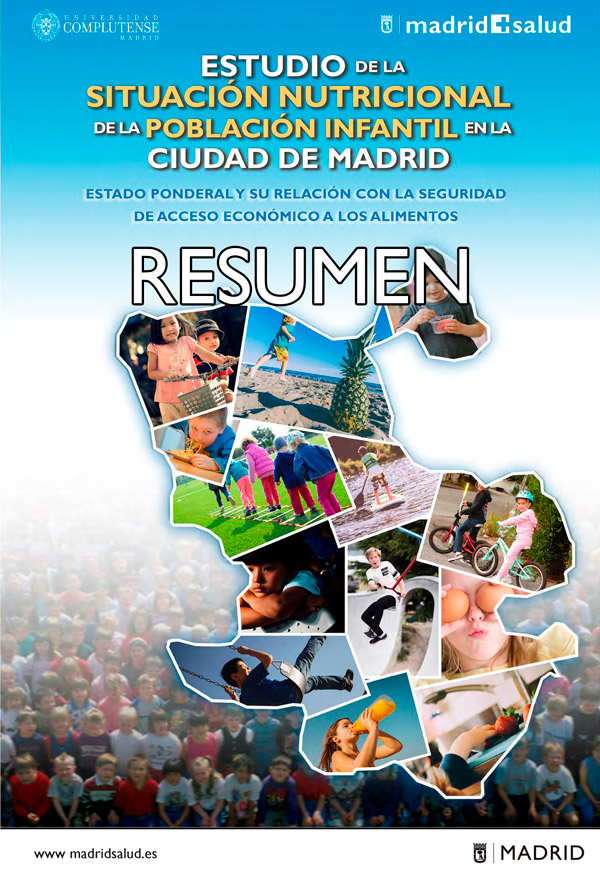[fusion_builder_container hundred_percent=»yes» overflow=»visible»][fusion_builder_row][fusion_builder_column type=»1_1″ last=»yes» spacing=»yes» center_content=»no» hide_on_mobile=»no» background_color=»» background_image=»» background_repeat=»no-repeat» background_position=»left top» hover_type=»none» link=»» border_position=»all» border_size=»0px» border_color=»» border_style=»» padding=»» margin_top=»» margin_bottom=»» animation_type=»» animation_direction=»» animation_speed=»0.1″ animation_offset=»» class=»» id=»»][fusion_text]El Ayuntamiento de Madrid está comprometido en potenciar políticas municipales que aborden la inequidad social y entre ellas aquellas que prevengan y palien el riesgo de malnutrición en la infancia y las dificultades de acceso a alimentos de las familias. Para ello es necesario conocer de forma exhaustiva la dimensión y características de esta problemática en la ciudad de Madrid, a fin de diseñar y poner en marcha medidasconcretas y operativas.
Con este fin, se propone dar continuidad al “Estudio sobre el estado nutricional y los hábitos alimentarios en niños y niñas de 3 a 12 años de centros escolares públicos del municipio de Madrid cuyos resultados fueron presentados en septiembre de 2015, por la Dirección General de Familia, Infancia, Educación y Juventud del área de Equidad, Derechos Sociales y Empleo. El estudio fue realizado en colaboración con la Asociación Española de Pediatría, con la participación de 32 colegios públicos del territorio municipal, obteniéndose un total de 1.208 cuestionarios válidos autocumplimentados por los padres de niños y niñas de cursos de infantil y primaria.[/fusion_text][/fusion_builder_column][fusion_builder_column type=»1_2″ last=»no» spacing=»yes» center_content=»no» hide_on_mobile=»no» background_color=»» background_image=»» background_repeat=»no-repeat» background_position=»left top» hover_type=»none» link=»» border_position=»all» border_size=»0px» border_color=»» border_style=»» padding=»» margin_top=»» margin_bottom=»» animation_type=»» animation_direction=»» animation_speed=»0.1″ animation_offset=»» class=»» id=»»][fusion_imageframe lightbox=»no» gallery_id=»» lightbox_image=»» style_type=»none» hover_type=»none» bordercolor=»» bordersize=»0px» borderradius=»0″ stylecolor=»» align=»none» link=»http://www.madridsalud.es/pdfs/INFORME ESTUDIO NUTRICION INFANTIL v2.pdf» linktarget=»_blank» animation_type=»0″ animation_direction=»down» animation_speed=»0.1″ animation_offset=»» hide_on_mobile=»no» class=»» id=»»]  [/fusion_imageframe][/fusion_builder_column][fusion_builder_column type=»1_2″ last=»yes» spacing=»yes» center_content=»no» hide_on_mobile=»no» background_color=»» background_image=»» background_repeat=»no-repeat» background_position=»left top» hover_type=»none» link=»» border_position=»all» border_size=»0px» border_color=»» border_style=»» padding=»» margin_top=»» margin_bottom=»» animation_type=»» animation_direction=»» animation_speed=»0.1″ animation_offset=»» class=»» id=»»][fusion_imageframe lightbox=»no» gallery_id=»» lightbox_image=»» style_type=»none» hover_type=»none» bordercolor=»» bordersize=»0px» borderradius=»0″ stylecolor=»» align=»none» link=»http://www.madridsalud.es/pdfs/RESUMEN DE PRINCIPALES RESULTADOS.pdf» linktarget=»_blank» animation_type=»0″ animation_direction=»down» animation_speed=»0.1″ animation_offset=»» hide_on_mobile=»no» class=»» id=»»]
[/fusion_imageframe][/fusion_builder_column][fusion_builder_column type=»1_2″ last=»yes» spacing=»yes» center_content=»no» hide_on_mobile=»no» background_color=»» background_image=»» background_repeat=»no-repeat» background_position=»left top» hover_type=»none» link=»» border_position=»all» border_size=»0px» border_color=»» border_style=»» padding=»» margin_top=»» margin_bottom=»» animation_type=»» animation_direction=»» animation_speed=»0.1″ animation_offset=»» class=»» id=»»][fusion_imageframe lightbox=»no» gallery_id=»» lightbox_image=»» style_type=»none» hover_type=»none» bordercolor=»» bordersize=»0px» borderradius=»0″ stylecolor=»» align=»none» link=»http://www.madridsalud.es/pdfs/RESUMEN DE PRINCIPALES RESULTADOS.pdf» linktarget=»_blank» animation_type=»0″ animation_direction=»down» animation_speed=»0.1″ animation_offset=»» hide_on_mobile=»no» class=»» id=»»]  [/fusion_imageframe][/fusion_builder_column][/fusion_builder_row][/fusion_builder_container]
[/fusion_imageframe][/fusion_builder_column][/fusion_builder_row][/fusion_builder_container]

